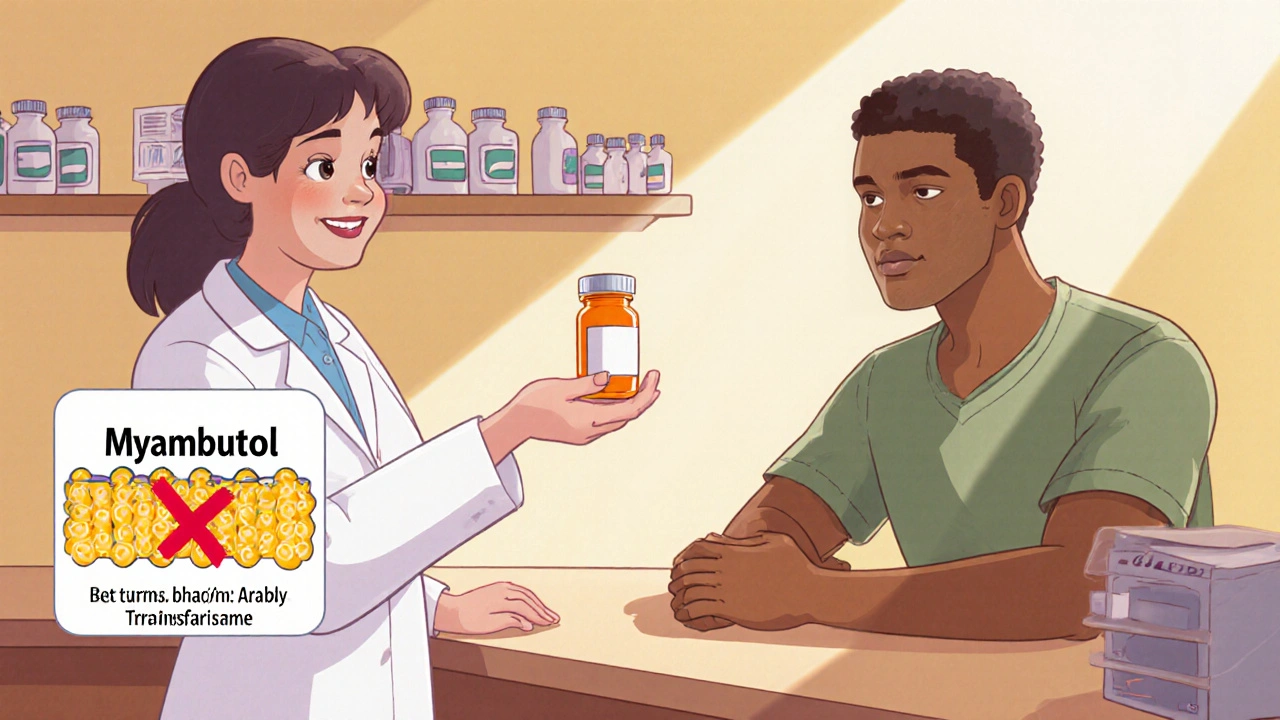Ethambutol: Uses, Side Effects, and Treatment Guidelines
When working with Ethambutol, a bacteriostatic drug that blocks cell wall synthesis in Mycobacterium species. Also known as Emb, it is a core component of modern Tuberculosis, the infectious disease caused by Mycobacterium tuberculosis. In practice, ethambutol ethambutol belongs to the category of anti‑mycobacterial agents, works best when paired with drugs like Rifampicin, and helps lower the risk of drug‑resistant strains. The drug’s main advantage is its ability to penetrate sputum and intracellular compartments, making it effective against both active and latent bacterial loads. Because it targets bacterial cell wall formation, ethambutol does not kill the microbes outright but stops them from multiplying, which is why clinicians always prescribe it as part of a multi‑drug regimen.
Practical Guidance for Safe Use
Typical adult dosing starts at 15 mg per kilogram of body weight per day, split into two doses, and can go up to 25 mg/kg for severe cases. The drug is usually given for the first two months of therapy, after which the regimen may shift to an isoniazid‑rifampicin combination if the patient tolerates it well. Because ethambutol is eliminated unchanged by the kidneys, dose adjustments are crucial for those with renal impairment; a reduction to 10–15 mg/kg is common in chronic kidney disease. Monitoring is straightforward: baseline visual acuity and color vision tests are done before starting, followed by monthly checks. If any decline in vision appears, the drug is stopped immediately to prevent permanent damage. Resistance is rare when ethambutol is used correctly, but monotherapy can quickly select for resistant Mycobacterium strains, underscoring the importance of combination therapy. Patients often wonder whether they can take the medication with food; the answer is yes, food does not interfere with absorption, and taking it with meals can reduce stomach upset.
One of the most talked‑about side effects is ocular toxicity, which can manifest as reduced visual acuity, loss of red‑green color discrimination, or optic neuritis. While the risk is under 5 % in the general population, the chance rises with higher doses and prolonged use. Early detection is key: patients should report any blurry vision, difficulty distinguishing colors, or eye pain right away. If caught early, stopping ethambutol typically leads to full recovery, but delayed discontinuation can result in lasting impairment. Other adverse events include peripheral neuropathy, joint pain, and mild hepatic enzyme elevations, all of which are manageable with routine lab checks. By staying vigilant and following the outlined monitoring schedule, most people complete their therapy without lasting issues. Below you’ll find a curated set of articles that dive deeper into dosing strategies, drug interactions, and real‑world patient experiences with ethambutol.
Ethambutol vs Other TB Drugs: Myambutol Comparison Guide
A detailed, side‑by‑side comparison of Myambutol (ethambutol) with other TB drugs, covering mechanisms, dosing, side effects, and when to choose each option.
Keep Reading
